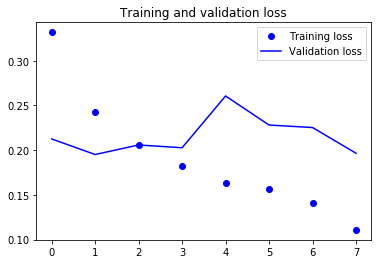Kaggle机器学习竞赛是全球最著名的人工智能比赛,每个竞赛项目都吸引了大量AI爱好者参与。
这里选择2018年底进行的盐沉积区识别竞赛作为例子:https://www.kaggle.com/c/tgs-salt-identification-challenge
一、数据
可以从Kaggle网站下载,但需先注册,下载速度可能也必将慢。可以直接从我的百度网盘下载:
链接:https://pan.baidu.com/s/1htvnrwQagOXHXfjpaGedPQ
提取码:a0zx
二、unet++模型开源代码
unet++是2018年被提出的网络模型,是对unet的优化,在图像分割中有优异的表现。采用的源码见:https://github.com/MrGiovanni/UNetPlusPlus
三、数据处理及准备
导入包:
import os import random import matplotlib.pyplot as plt import pandas as pd import numpy as np from sklearn.model_selection import train_test_split from skimage.transform import resize from UNetPlusPlus_master.segmentation_models import Xnet from keras.preprocessing.image import load_img from keras.optimizers import * from keras.callbacks import EarlyStopping, ModelCheckpoint
数据位置、尺寸:
root = r'E:Kagglesaltcompetition_data' model_path = root + '/model' imgs_path = root + r' rain' test_imgs_path = root + r' est' train_csv = root + r' rain.csv' depths_csv = root + r'depths.csv' orig_img_w = 101 orig_img_h = 101 train_img_w = 224 train_img_h = 224
原尺寸和训练尺寸转换:
def orig2tain(img): return resize(img, (train_img_w, train_img_h), mode='constant', preserve_range=True) def train2orig(img): return resize(img, (orig_img_w, orig_img_h), mode='constant', preserve_range=True)
读入数据:
train_df = pd.read_csv(train_csv, usecols=[0], index_col='id') train_df["images"] = [np.array(load_img("{}/images/{}.png".format(imgs_path, idx), grayscale=False)) / 255 for idx in train_df.index] train_df["masks"] = [np.array(load_img("{}/masks/{}.png".format(imgs_path, idx), grayscale=True)) / 255 for idx in train_df.index]
显示读入结果:
max_images = 10 grid_width = 10 grid_height = int(max_images / grid_width) + 1 fig, axs = plt.subplots(grid_height, grid_width, figsize=(20, 4)) for i, idx in enumerate(train_df.index[:max_images]): img = train_df.loc[idx].images mask = train_df.loc[idx].masks ax = axs[int(i / grid_width), i % grid_width] ax.imshow(img, cmap="Greys") ax = axs[int(i / grid_width)+1, i % grid_width] ax.imshow(mask, cmap="Greens") ax.set_yticklabels([]) ax.set_xticklabels([]) plt.show()

按2:8随机分训练集、验证集:
train_ids, valid_ids, train_x, valid_x, train_y, valid_y = train_test_split( train_df.index.values, np.array(train_df.images.map(orig2tain).tolist()).reshape(-1, train_img_w, train_img_h, 3), np.array(train_df.masks.map(orig2tain).tolist()).reshape(-1, train_img_w, train_img_h, 1), test_size=0.2, random_state=123)
四、训练
input_size = (train_img_w, train_img_h, 3) model = Xnet(input_shape=input_size, backbone_name='resnet50', encoder_weights='imagenet', decoder_block_type='transpose') model.compile(optimizer = Adam(lr = 1e-4), loss = 'binary_crossentropy', metrics = ['accuracy']) model_name = 'Kaggle_Salt_{epoch:02d}-{val_acc:.3f}.hdf5' abs_model_name = os.path.join(model_path, model_name) model_checkpoint = ModelCheckpoint(abs_model_name, monitor='val_loss', verbose=2, save_best_only=True) early_stop = EarlyStopping(monitor='val_loss', patience=6) callbacks = [early_stop, model_checkpoint]
history = model.fit(train_x, train_y, validation_data=[valid_x, valid_y], epochs=100, batch_size=4, callbacks=callbacks)
显示训练曲线:
acc = history.history['acc'] val_acc = history.history['val_acc'] loss = history.history['loss'] val_loss = history.history['val_loss'] epochs = range(len(acc)) plt.plot(epochs, acc, 'bo', label='Training acc') plt.plot(epochs, val_acc, 'b', label='Validation acc') plt.title('Training and validation accuracy') plt.legend() plt.figure() plt.plot(epochs, loss, 'bo', label='Training loss') plt.plot(epochs, val_loss, 'b', label='Validation loss') plt.title('Training and validation loss') plt.legend() plt.show()

